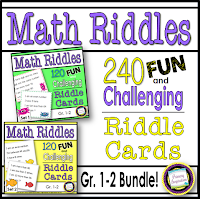Spiral review, returning to topics on a regular basis throughout the school year, is a great tool for keeping the topics, skills, and vocabulary that you've already taught fresh and available for your students.
It used to be that once a chapter was finished, you could just close the book there and walk away. Do you remember learning measurement and geometry that way? Of course, we all know that kids catch on to that kind of stuff super quick. Many of them will totally abandon ship on a topic if they know there's no expectation for them to remember it and use it. Lots of math series have addressed this now with spiral review pages. (Math Boxes, anyone?)
Regardless of where you stand in the mastery teaching vs. spiral teaching debate, I think we can agree that once you move on to a new topic in math, some students seem to basically banish the old one from their mind if you don't regularly bring it forward again.
Is spiral review compatible with mastery teaching?
Absolutely! In fact, I believe that regular spiral review is even more important when your curriculum is developed on the mastery system. Regularly planned spiral review allows you and your students to make connections between past and current learning, important for all students but critical for our strugglers. Often, spiral review will be what brings them to their "aha!" moments!
Is spiral review the same as spiral curriculum?
No, it's not. Spiral review is dipping back throughout the year into previously taught topics to keep them fresh, relevant, and connected in the minds of our students. Spiraled curriculum moves on to the next topic based on time spent and lessons completed, whether or not your students have mastered the topic, with the expectation that the topic will be addressed and added to the next year.
Why is spiral review important?
- It's unrealistic to assume that our young learners will be able to master and retain a concept without the opportunity to practice it again and again, in different contexts and different ways.
- Consistent spiral review throughout the year reduces the time you'll need to spend on a huge review right before testing.
- Spiral review is a great opportunity for you to do some informal assessment! When you spot a gap, jot down a few names and call those students for a small group lesson!
- Research shows that spiral review increases mastery.
But what about FUN?? Pages in a math book and many worksheets are by and large ... boring. And kids learn best when they're engaged and having fun, NOT filling in the blanks.
So, let's talk about some games and activities for effective spiral review!
Before you begin, pull together a collection of the questions you want to use. This sounds like it could be a huge job, but it doesn't have to be! Chances are that you have a collection of task cards. Spread the sets out around your classroom, take a few from each set, and make copies. Put your originals back in their sets (easy, because you spread them out). Now you're ready to go for these review games. These games have been around forever, but remember that what's old to you may be new and exciting for your students!
- Relay Races: form two teams, sit in two long trains facing forward. Take turns answering questions, scoring points for correct answers.
- Basketball: play with your whole class, or break into groups of 4-6 students. Make an extra copy of your task cards for this one, since you won't be getting them back. Each group needs a target, like an empty garbage can or plastic bin. Take turns answering questions. If the answer is correct, the student who answers crumbles the card into a ball and takes a shot at tossing it into the target. If it's winter, you can play the same game and call it Snowball.
- Zap!: Break into groups of 8-10 students. Add some cards to the set with the word "Zap!" on them. Put all of the cards in a bag. Sit on the floor in a circle. Pass the bag around, with your students each taking out one card, reading it aloud, and solving it. If correct, they keep the card. If they get a "Zap!" card, they return all of their cards to the bag. The player with the most cards when the bag is empty OR the first player to get a given number of cards wins the game.
- Use commercially available games like Jenga and Operation. Answering a question correctly entitles a player to add a piece to the tower ... or pull out the appendix! 🙂
- Use any board game the same way. When it's a player's turn, they must answer a question correctly to earn the privilege of rolling the die or spinning the spinner. try it with Candyland, Chutes & Ladders, or whatever games you already have!
- Get your interactive board
As you see, it doesn't take much effort to turn spiral review into fun and games!
Do you need more ideas for spiral review? Try number sense math riddles for low-prep daily spiral review!
Be ready for active and engaging math all year when you get this bundle of games, lessons, and PD courses, too! It's being offered at less than 20% of its cost if offered separately, but only until March 26th. Click here to see the details!
Happy Teaching!
Linda









This comment has been removed by a blog administrator.
ReplyDelete